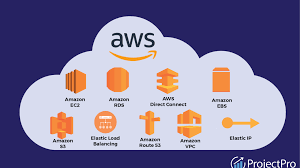As digital demands accelerate, organizations must evolve faster than ever. Legacy systems, outdated processes, and on-premise infrastructures limit innovation, flexibility, and growth. To remain competitive, companies increasingly turn to cloud migration and modernization strategies—and at the center of this movement is AWS transformation.
AWS transformation refers to the comprehensive shift from traditional IT systems to Amazon Web Services (AWS), enabling businesses to operate with greater speed, security, scalability, and efficiency. This article explores what AWS transformation involves, why it matters, key strategies, challenges, best practices, and how organizations can unlock its full potential.
What Is AWS Transformation?
AWS transformation is the process of migrating, modernizing, and optimizing an organization’s applications, data, and infrastructure on Amazon Web Services.
It includes:
- Cloud migration (lift-and-shift or full modernization)
- Application re-architecting
- Data modernization and analytics
- Automation and DevOps integration
- Cloud-native development
- Security enhancement
- Scalability and performance optimization
AWS transformation is not just a technical shift—it’s a business evolution that allows organizations to innovate, save costs, increase reliability, and operate globally.
Why AWS Transformation Matters
AWS has become the world’s most comprehensive cloud platform, supporting millions of businesses across nearly every industry. Companies pursuing AWS transformation gain several critical advantages:
1. Increased Agility
AWS enables rapid application deployment, flexible resources, and on-demand scaling. This improves time-to-market and innovation cycles.
2. Significant Cost Savings
Instead of investing in expensive physical hardware, organizations pay only for what they use. AWS’s cost-optimization tools further reduce spending.
3. Enhanced Security
AWS provides industry-leading security frameworks, encryption capabilities, identity access management, compliance certifications, and automated threat detection.
4. Global Reach
With data centers (AWS Regions and Availability Zones) across the world, businesses can reach global users with low latency and high performance.
5. Improved Reliability and Resilience
AWS offers built-in redundancy, automated backups, and disaster recovery solutions, boosting business continuity.
6. Innovation with AI, ML, and Modern Tools
AWS supports machine learning, IoT, analytics, and microservices, making it ideal for digital transformation.
Key Components of AWS Transformation
1. Cloud Migration
Migration is the foundation of AWS transformation. Common migration models include:
A. Lift and Shift (Rehosting)
Moving on-premise systems to AWS without major changes.
Fastest and often first stage of transformation.
B. Replatforming
Optimizing components—for example, moving databases to Amazon RDS.
C. Refactoring / Re-architecting
Rebuilding applications using cloud-native services such as:
- AWS Lambda
- Amazon DynamoDB
- Amazon Aurora
- Amazon ECS / EKS
This enables maximum scalability and performance.
2. Data Modernization
AWS helps businesses modernize data systems using services like:
- Amazon Redshift (analytics)
- Amazon S3 (object storage)
- AWS Glue (ETL)
- Amazon Athena (serverless querying)
Modernized data architecture enables predictive analytics and real-time insights.
3. Application Modernization
Applications are adapted to cloud-native architecture:
- Microservices
- Serverless computing
- Containerization
- API-driven development
This step makes apps faster, more scalable, and easier to update.
4. DevOps and Automation
AWS transformation accelerates delivery through:
- AWS CodePipeline
- AWS CodeBuild
- AWS CodeDeploy
- Infrastructure-as-Code (IaC) with CloudFormation or Terraform
DevOps eliminates manual work and speeds up software releases.
5. Security and Compliance Integration
Security must be embedded into each transformation stage using:
- AWS Identity and Access Management (IAM)
- AWS KMS for encryption
- AWS Shield and WAF
- AWS CloudTrail and GuardDuty
AWS provides compliance for HIPAA, GDPR, SOC 2, PCI, and more.
6. Performance Optimization
AWS tools such as CloudWatch, AWS Compute Optimizer, and Auto Scaling ensure high performance with cost balance.
The AWS Transformation Journey: Step-by-Step

1. Assess and Plan
A successful AWS transformation begins by evaluating:
- IT environment
- Current workloads
- Existing infrastructure
- Business goals
- Security needs
- Cost and ROI expectations
This results in a customized transformation roadmap.
2. Migration Readiness
Before migrating, organizations prepare:
- Governance model
- Cloud skills and training
- Data protection strategy
- Infrastructure dependency mapping
This step ensures a smooth transition.
3. Execute Migration
Workloads are migrated in phases:
- Development and testing environments
- Business-critical applications
- Databases
- Legacy systems
Automation tools streamline migration with minimal downtime.
4. Modernize and Optimize
Once in the cloud, systems are modernized by:
- Introducing serverless functions
- Containerizing applications
- Implementing microservices
- Optimizing databases
- Enhancing monitoring and automation
This is where the full value of AWS transformation emerges.
5. Manage and Innovate
Post-transformation, organizations leverage:
- AI and machine learning
- Predictive analytics
- Edge computing
- IoT integration
- Continuous deployment (CI/CD)
Innovation becomes continuous and scalable.
Challenges of AWS Transformation (and How to Solve Them)
1. Skill Gaps
Many teams lack cloud expertise.
Solution: AWS training, certification, and managed cloud partners.
2. Legacy Technology Barriers
Old systems are difficult to modernize.
Solution: Gradual migration + hybrid architectures.
3. Security Concerns
Misconfigured cloud environments create vulnerabilities.
Solution: Shared responsibility model + AWS security frameworks.
4. Budget Mismanagement
Costs may rise if not optimized.
Solution: Use AWS budgeting tools and cost optimization strategies.
5. Cultural Resistance
Employees may fear automation or new tools.
Solution: Strong leadership, communication, and change management.
Benefits of Successful AWS Transformation
1. Faster Innovation
Teams can experiment and deploy faster using cloud-native tools.
2. Better Performance
Applications run globally with high availability.
3. Flexible Scalability
Resources adjust automatically based on demand.
4. Stronger Security
AWS’s security architecture reduces risks significantly.
5. Long-Term Cost Efficiency
Organizations avoid upfront hardware investment and minimize waste.
6. Improved Customer Experience
Faster load times, personalization, and reliability lead to happier users.
Industries Transforming with AWS
Healthcare
HIPAA-compliant systems, telehealth, and patient analytics.
Retail
Omnichannel commerce, real-time inventory, AI-driven recommendations.
Finance
Secure transactions, fraud detection, automated compliance.
Manufacturing
IoT-driven predictive maintenance and smart factories.
Media & Entertainment
Content streaming, rendering, and global distribution.
Startups
Rapid prototyping, low-cost scaling, and global accessibility.
The Future of AWS Transformation
AWS continues to evolve, and future transformation trends include:
- Advanced AI/ML integration
- Autonomous cloud operations (AIOps)
- More serverless adoption
- Multi-cloud and hybrid cloud growth
- Blockchain and zero-trust architectures
- Sustainable computing solutions
Organizations that invest in AWS transformation today will be the digital leaders of tomorrow.
Conclusion
AWS transformation is more than moving workloads to the cloud—it is a strategic reinvention of how businesses operate, innovate, secure data, and deliver value. With AWS, organizations gain agility, lower costs, improved security, and the technological foundation needed for long-term digital success.
As industries evolve, companies that embrace AWS transformation will be better equipped to thrive, adapt, and lead in a rapidly changing world.



Electric-motor-circuit-breaker-selection-and-usage-1024x683-1-150x150.webp)

